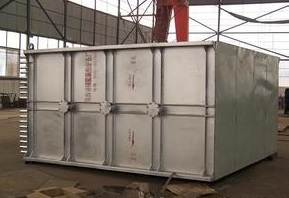Lord Fin Tube--Separate type heat pipe heat exchanger
The separate type heat pipe heat exchanger is a thermal device designed to efficiently transfer heat between two independent fluid streams using heat pipes as the primary heat transfer mechanism. The basic principle involves absorbing heat from one fluid stream at the evaporator section of the heat pipes, causing the working fluid inside the heat pipes to vaporize and flow to the other end, the condenser section, where the heat is released to a colder fluid stream. The working fluid then condenses back to liquid and returns to the evaporator section, completing the cycle. This type of heat exchanger is widely utilized in HVAC systems, industrial waste heat recovery, electronics cooling, and renewable energy systems due to its high thermal conductivity, compact structure, prevention of fluid cross-contamination, and passive operation without external energy input.
The workflow of separate type heat pipe heat exchanger involves a series of steps:
1. Flue Gas Heat Exchange:
- Hot blast furnace flue gas passes through the gas heat exchanger.
- The working fluid inside the heat exchangers tubes absorbs the heat from the flue gas.
- This absorption results in the generation of steam, which rises to the upper part of the flue gas heat exchanger.
2. Steam Transfer:
- The steam is then conveyed through steam pipes to the air and gas heat exchanger.
3. Condensation and Heat Transfer:
- In the air and gas heat exchanger, the steam undergoes condensation, releasing its latent heat to heat the fluid (air or gas) outside the tubes.
- The working fluid, now in a condensed state, gathers in the lower part of the heat exchanger.
4. Fluid Return:
- The condensed working fluid returns through a catheter to flow back to the flue gas heat exchanger.
5. Evaporation:
- In the flue gas heat exchanger, the working fluid evaporates at the head under the influence of the hot blast furnace flue gas.
6. Repeat Cycle:
- This cycle repeats continuously, completing the transmission of heat from the hot end to the cold end.
Separate type Heat Pipe Heat Exchanger Structure:
The separate type heat pipe heat exchanger is constructed with numerous high-frequency finned tubes that are welded independently to each other. The tubes are arranged in a way that ensures good thermal conductivity. The hot and cold ends correspond to tube bundles connected through steam pipes and return pipes, forming a closed pipe system.
Separate type Heat Pipe Heat Exchanger Characteristics:
1. Independent Heating and Cooling Boxes:
- The heating box (gas heat exchanger) and cooling box (gas heat exchanger and air heat exchanger) can operate independently.
- This design allows for effective convergence, gas source separation, and remote heat transfer. It also facilitates easy on-site flexible layout.
2. Gravity-Driven Circulation:
- The circulation of the working medium relies on reflux potential difference and gravity.
- It operates without external power, mechanical moving parts, seals, or wear, enhancing equipment reliability and significantly reducing operating costs.
3. Fluid Separation and Compatibility:
- The independent nature of the heating and cooling boxes enables fluid separation and sealing.
- Suitable for heat transfer involving flammable, explosive, or hazardous fluids. It can also simultaneously transfer heat between different fluids.
4. Customizable Design:
- Different structure parameters and materials can be chosen for heat transfer and the heat exchanger based on the characteristics of the cold and hot fluids.
- This customization effectively addresses dew point corrosion and ash accumulation issues.


